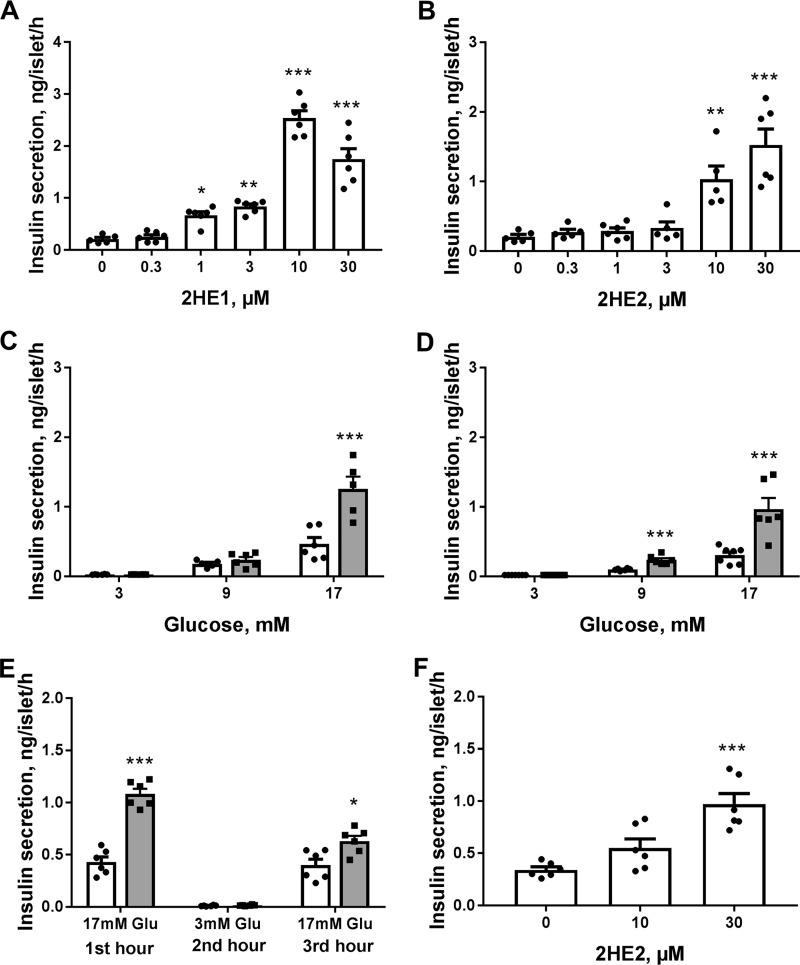Figure 2.
2-Hydroxyestrone (2HE1) and 2-hydroxyestradiol (2HE2) induce concentration- and glucose-dependent increases in insulin secretion in pancreatic islets. A, effects of increasing concentrations of 2HE1 on insulin secretion in mouse islets at 17 mm glucose (n = 6). B, effects of increasing concentrations of 2HE2 on insulin secretion in mouse islets at 17 mm glucose (n = 6). C, effects of 10 μm 2HE1 on insulin secretion in mouse islets at different glucose concentrations (n = 6). Insulin secretion in the absence of steroid is depicted as open bars, and insulin secretion in the presence of 10 μm steroid is depicted as gray bars. D, effects of 10 μm 2HE2 on insulin secretion in mouse islets at different glucose concentrations (n = 6). Insulin secretion in the absence of steroid depicted as open bars and in the presence of 10 μm steroid as gray bars. E, preservation of glucose-induced insulin secretion in mouse islets pre-exposed to 2HE1. Islets were treated for the first hour of incubation with 17 mm glucose in the absence (open bars) or presence of 10 μm 2HE1 (gray bars). Then islets were washed and treated with 3 mm glucose (second hour of incubation) followed by treatment with 17 mm glucose (third hour of incubation). Insulin secretion was measured during each incubation (n = 6). F, effects of 2HE2 on insulin secretion in isolated human pancreatic islets measured in the presence of 11 mm glucose (n = 6). *, p < 0.05; **, p < 0.01; and ***, p < 0.001 versus insulin secretion in the vehicle group at appropriate glucose concentration.

